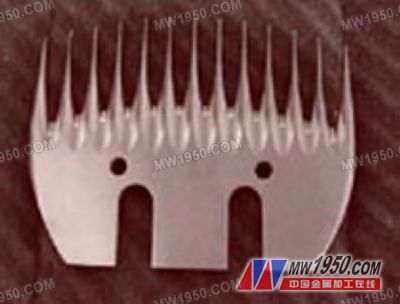1 Introduction
The hypereutectoid carbon tool steel and the alloy tool steel are subjected to appropriate heat treatment to obtain high hardness and high wear resistance, and thus are commonly used materials for manufacturing various knives and gauges. Due to the high carbon content, the rolling, forging or roughing heat treatment process is improper, often resulting in coarse (K) coarse and mesh, leading segregation, resulting in high brittleness of the finished product, and wear resistance is also reduced. To eliminate these K rickets, the traditional classic process is to heat the embryo or semi-finished product. Normalizing above Accm. This is a process with long working hours and high energy consumption, and the effect is often not ideal. For many tools and gauges, the K disease of the heart is not enough to reduce the overall strength to an unusable level. As long as the edge or surface metallurgical structure is improved, its performance can be improved. If these tools are subjected to short-time solid solution nitriding during heat treatment of the finished product, and then quenched by the furnace, satisfactory results can be obtained, which not only saves energy and time, but also improves life. This process is called "nitrogen-containing martensite treatment", referred to as "NM treatment". For ferroalloys, the infiltration of nitrogen can greatly reduce the A1 and A3 (Acm) points, and at a lower temperature, K can be dissolved into the austenite (A), and the K ç–µ disease disappears, and the layer is obtained after quenching. Martensite (M) containing carbon and nitrogen and an appropriate amount of retained austenite (AR) structure, the heart is M and the original K (Fig. 1a, b). In the same way, for some parts that need long-term deep carburization, and thus tend to appear network-like segregation, after infiltration of appropriate amount of nitrogen during quenching and heating after carburizing, the metallographic structure of the layer can be greatly improved, avoiding waste and improving. Quality and longevity.

Using the NM process, we have produced hundreds of thousands of shearer blades and a small amount of lime beater hammers since 1974. Some units in Inner Mongolia have used satisfactory results for military heavy-duty gears and parts of aerospace products.

2 NM treatment eliminates shearing machine blade K segregation
In the early 1960s, China began to produce shearing machines. At that time, the flocks were mostly grazing in desert or semi-desert grasslands, and the amount of sand contained in the wool was extremely high. A pair of blades will remove the sharpening knife for every 2-3 sheep cuts. Each pair of blades will be worn and scrapped after cutting dozens of sheep, which seriously affects the promotion of mechanized shearing. The used T12A, Cr06, and Soviet X05 (w%C 1.25-1.40, Cr0.4-0.6) steels have not been used well. In 1968, the former Agricultural Machinery Department uniformly imported Japanese SKS8 (w%C 1.30-1.50, Cr0.20-0.50, W2.0-2.5) steel for use by all factories, and no improvement was observed.
From 1974 to 1978, the author participated in the quality research of the blade of the shearing machine and made a comprehensive analysis of the blade material. It was found that the raw materials of SKS8, Cr06 and X05 steels were too high in carbon content, and there were K coarse and severe mesh and band segregation problems in the metallographic structure. (See Figure 1a, b for the heart). Fennep, a famous former Soviet tool steel expert, pointed out that K segregation is almost inevitable when C content >1.20% in carbon steel and low alloy steel [1]. In the keystroke, we and the metallurgical department jointly developed a successful domestic blade steel and heat treatment new technology, and completed the tackling task in advance in a super standard [2]. In the face of a large number of SKS8 and Cr06 steels accumulated in various factories, many tests were carried out, and a new heat treatment process for eliminating K rickets was found, and these steel materials were reused.
Next page
Monosodium Phosphate,Ammonium Dihydric Phosphate,Ammonium Dihydrogen Phosphate
Sodium Tripolyphosphate,Sodium Hexameta Phosphat Co., Ltd. , http://www.chphosphate.com